Threads/ASDP Artistic Outerwear Challenge
Inspired by favorite paintings, designers create one-of-a-kind jackets and coats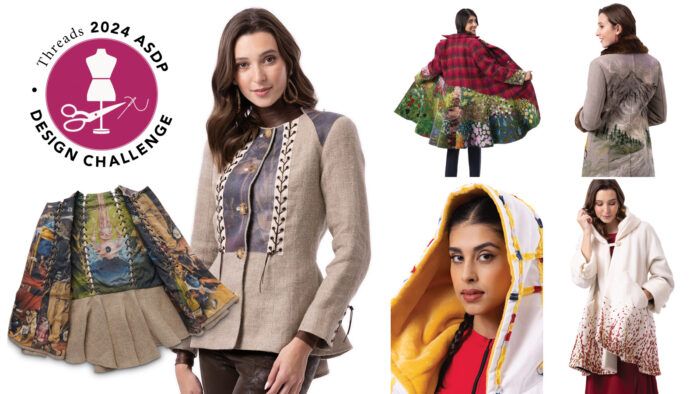
Sewing clothing is all about turning two-dimensional fabric into three-dimensional garments. Last year, we challenged the members of the Association of Sewing and Design Professionals to go one step further: We asked them to create an original piece of outerwear inspired by a two-dimensional work of art. The designers looked at paintings, drawings, prints, and photography, and came up with an impressive range of work.
The finalist garments were judged by a team of experts at the ASDP’s annual conference in Denver, Colorado. Debby Spence, the 2022 Best Overall winner, along with guest judges Rae Cumbie and Clara Dittli, examined the entries in person. Threads Editor Carol J. Fresia joined them via teleconference.
The entries were impressive and covered art from the late medieval period to modern art, including paintings by talented amateur artists. Among the winners, you’ll see thoughtful renditions of five paintings, with each designer approaching the task of transforming art into something that honored the original artists’ creativity.
Best Overall: Mary Funt
Fantasy World Jacket
Mary Funt turned to a painting that draws the viewer in with its densely packed imagery. Hieronymus Bosch’s Garden of Earthly Delights, 1490–1510, is a triptych (three-panelled painting), filled with fantastical figures and structures representing the Garden of Eden, the Garden of Earthly Delights, and Hell.
The jacket is made of a coarsely woven textile to mimic late-medieval materials, and Mary used lacing to join the garment sections, again in reference to clothing of the 1400s and 1500s.
In addition to the detailed jacket, Mary made a coordinating pair of close-fitting pants in brown faux leather.
The judges appreciated the many beautifully sewn details, including the eyelet panels, bound buttonholes, and the unusual raised back neckline design. Despite its references to art and clothing from the decades around 1500, the ensemble is modern and elegant.
Printed fabric: Images from the triptych were printed on the lining fabric, and heat-transferred to the outer fabric.
Triptych construction: Like the original artwork, whose two outer panels fold closed over the central panel, the jacket has a subdued exterior, with a more colorful interior.
Period silhouette: Mary based the jacket style on Renaissance-period doublets, with laced seams and a peplum.
Best Pictorial Embellishment: Jennifer Phillips
Mountain Reverie Wool Coat
American artist and television personality Bob Ross produced countless mountain landscapes, one of which captured Jennifer Phillips’s imagination. She upcycled a wool coat with insect damage, to translate Ross’s image into wearable art.
Instead of paint on actual canvas, Jennifer needle-felted wool roving to reproduce selected motifs from the Ross original. Although she included many features of the painting, she created a soft, brushy texture that lightly sketches in the snow-capped mountains and turns the water into drifts of mist. The image is centered on the coat back, wrapping around the sides, where a cozy cabin nestles at pocket level on the left.
The judges found the felted version of the mountain landscape more appealing than the painted inspiration piece—an artistic achievement.
Lining and closures: The coat is lined with heavy satin in dark salmon. At center front, a hidden placket conceals the four-button opening.
Pocket access: In place of installing pockets in the coat, Jennifer left slot openings in the front princess seams to give access to pockets in garments worn beneath.
Collar and cuffs: The taupe coat is accented by detachable faux-fur collar and cuffs.
Most Unique Interpretation: Patty Robison
Broadway Boogie Woogie Dry Coat
Designer Patty Robison enjoys cold-water swimming and needed a warm coat to wear before and after her chilly outdoor dips. This piece is oversized, so she can change from wet to dry clothes while keeping warm and covered up. For a burst of high energy, Patty looked to a 1943 painting by Piet Mondrian. Broadway Boogie Woogie was itself inspired by the dynamism of New York City.
Mondrian’s multicolored design appears in a trim that Patty fashioned from torn quilting cotton squares. She topstitched the squares onto cotton twill tape, which was then arranged in a grid pattern on the coat. Patches and pockets mimic further motifs from the original painting.
Although the embellishment appears, at first glance, to be a literal translation of Mondrian’s painting, the trim’s torn edges add unexpected, casual texture.
Ample silhouette: Patty used an out-of-print Calvin Klein pattern from 1992, Vogue 2995. A generous hood accompanies the wrap style.
Warm, sturdy fabrics: White denim keeps out wind, while plush polyester fleece lining provides extra insulation.
Audience Choice: Juliette Howland
Promise of Summer
Claude Monet’s 1902 painting of a pathway in his garden in Giverny captures the play of deep shadow and sunlight pouring through an alley of trees. Juliette Howland, working from the painting and photos of the actual garden, designed a coat that expresses the imagined shift from a dreary winter to the brilliance of summer.
To translate the softness of the impressionist painting’s brushwork, Juliette selected mohair for the coat and ambitiously needle-felted the painting’s imagery onto the skirt portion. The intricate colorwork and sense of space in Monet’s original are impressively and accurately rendered in wool roving.
With its full sweep and rich color, it’s no wonder this coat captivated the audience.
Pattern modification: The coat is based on Vogue 8346 (discontinued), with lapel and sleeve changes for better shaping and less bulk.
Tailoring techniques: Juliette used traditional methods and materials, such as hair canvas supports and pad-stitching.
Fine finishes: Bound buttonholes and covered buttons elevate the coat.
 |
 |
Most Holistic Interpretation: Michelle Loggins
Falling Into Winter, Lucille
Conveying all the formal elements of an artwork in a piece of clothing is a challenge, and it can be especially tricky to translate a mood and a personal connection through textiles. Finding a way to make every aspect of the garment—the outside and the inside—speak to the artwork’s qualities, takes design acumen and sewing skill.
Michelle Loggins began with a painting created by her late son, Reese, depicting birch trees in a dark forest.
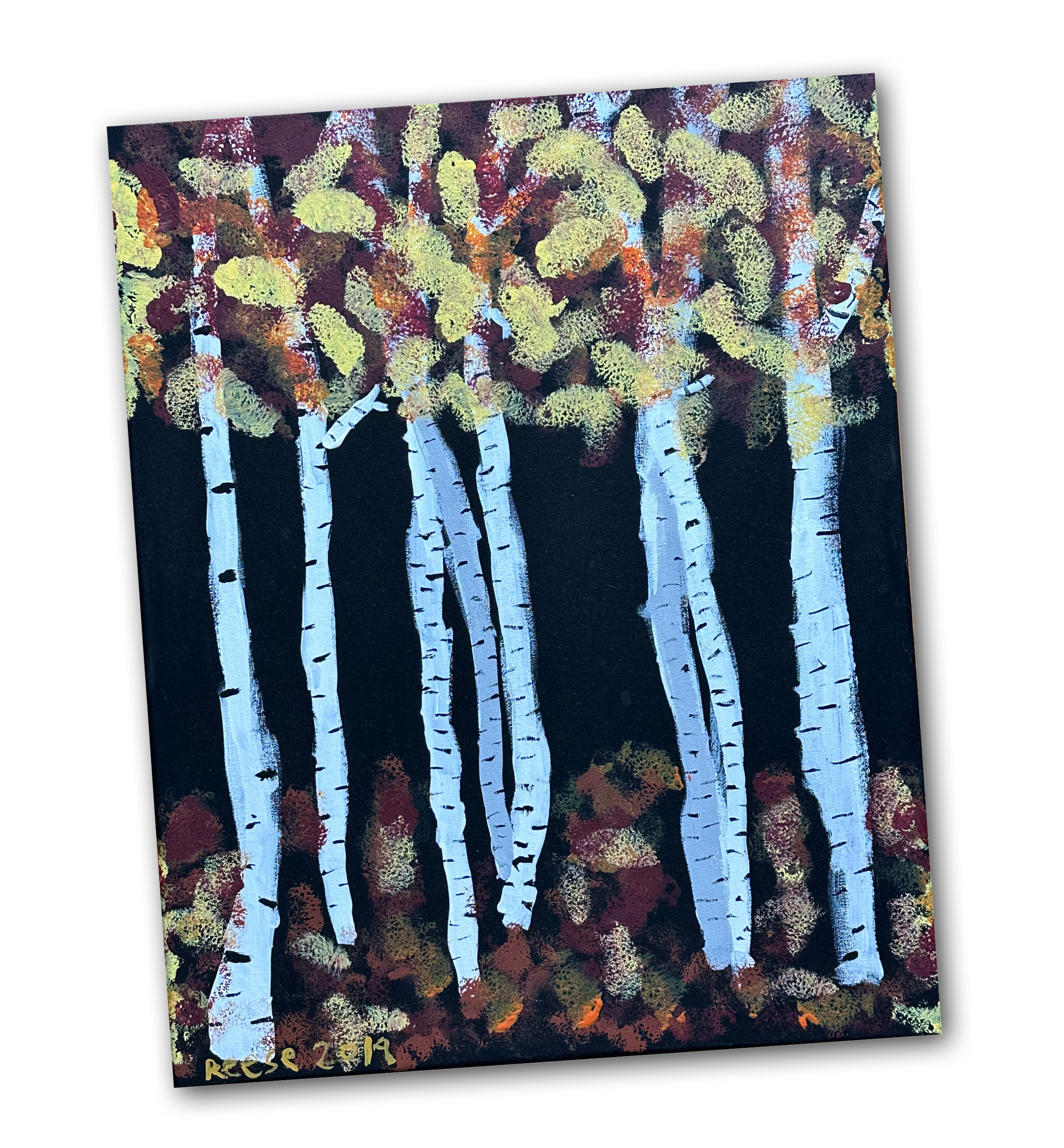
She had the painting printed on satin for the lining, but was less literal in her interpretation on the coat’s exterior.
Winding lines of hand embroidery and beads embellish the off-white bouclé swing coat.
In addition to the many tailoring and dressmaking details, the judges admired Michelle’s success in incorporating her family story into the garment.
Drafting and draping: Michelle created the 1950s-inspired coat pattern through flat patternmaking and draping.
Mixed fabrics: The main coat is made of woven bouclé; the hood is lined in matching mohair knit.
Pearl accents: A pearl strand forms a martingale belt in back, with additional pearls in the cuff and neckline buttons.
Carol J. Fresia is Threads’ editor.



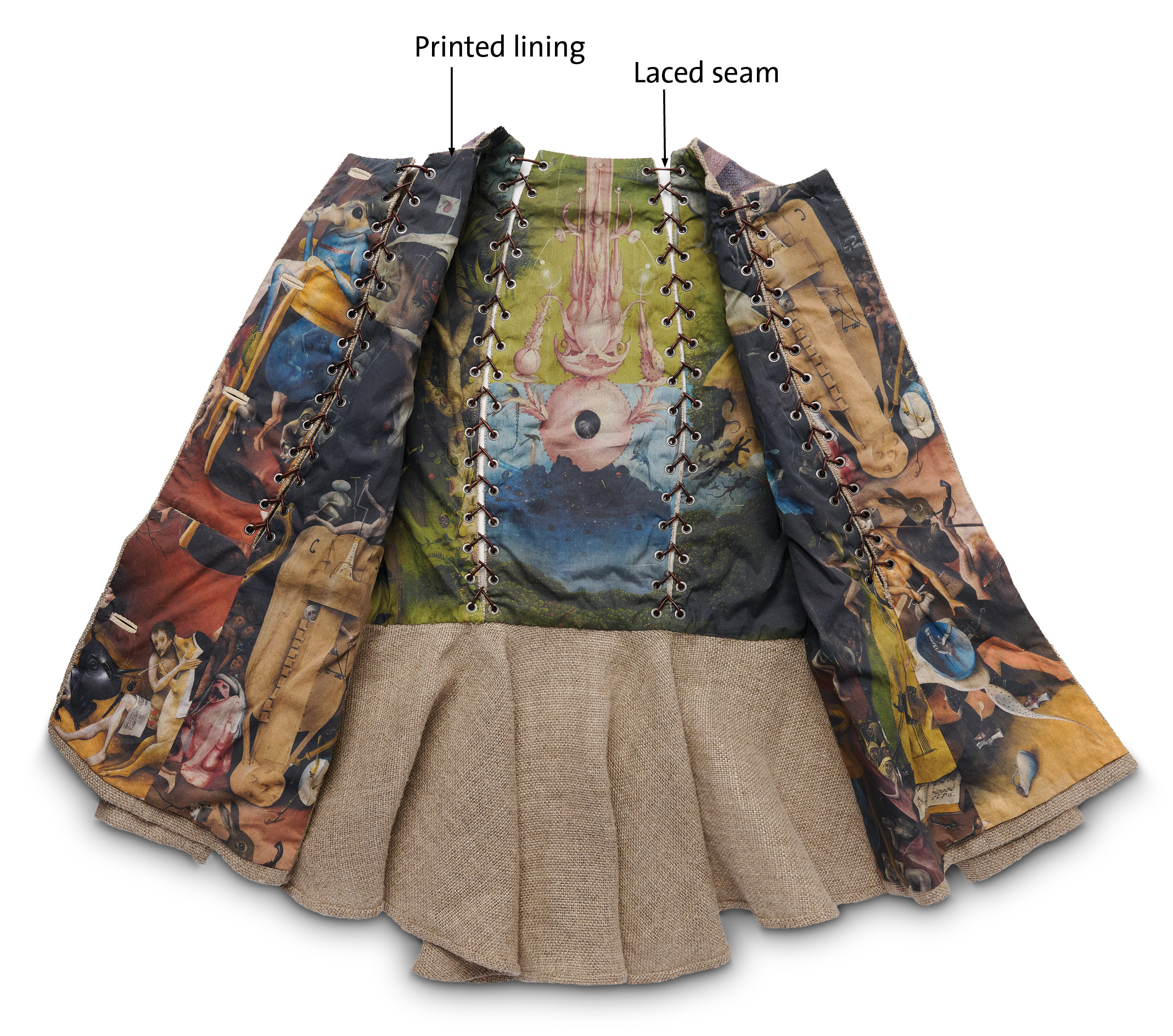
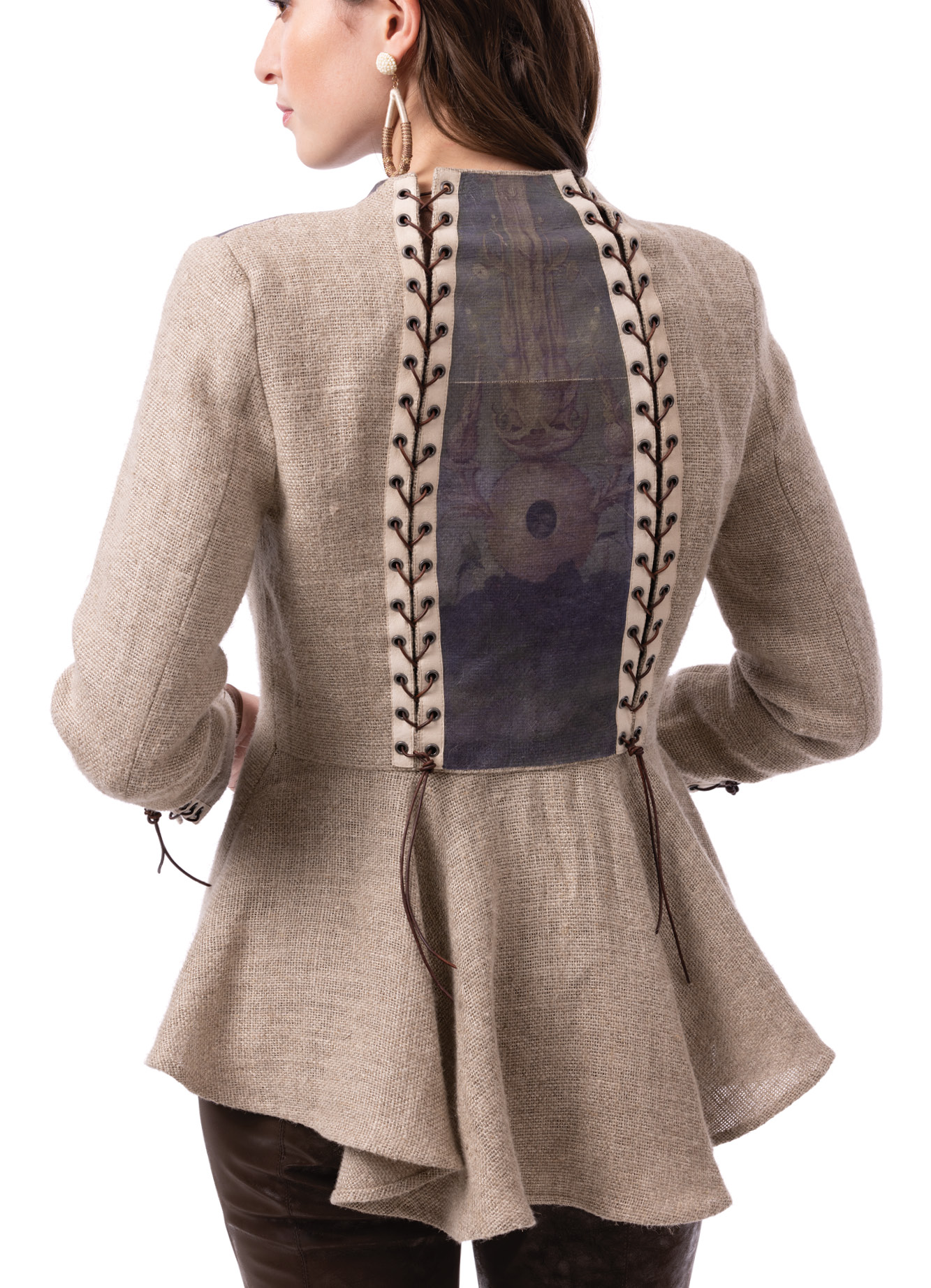

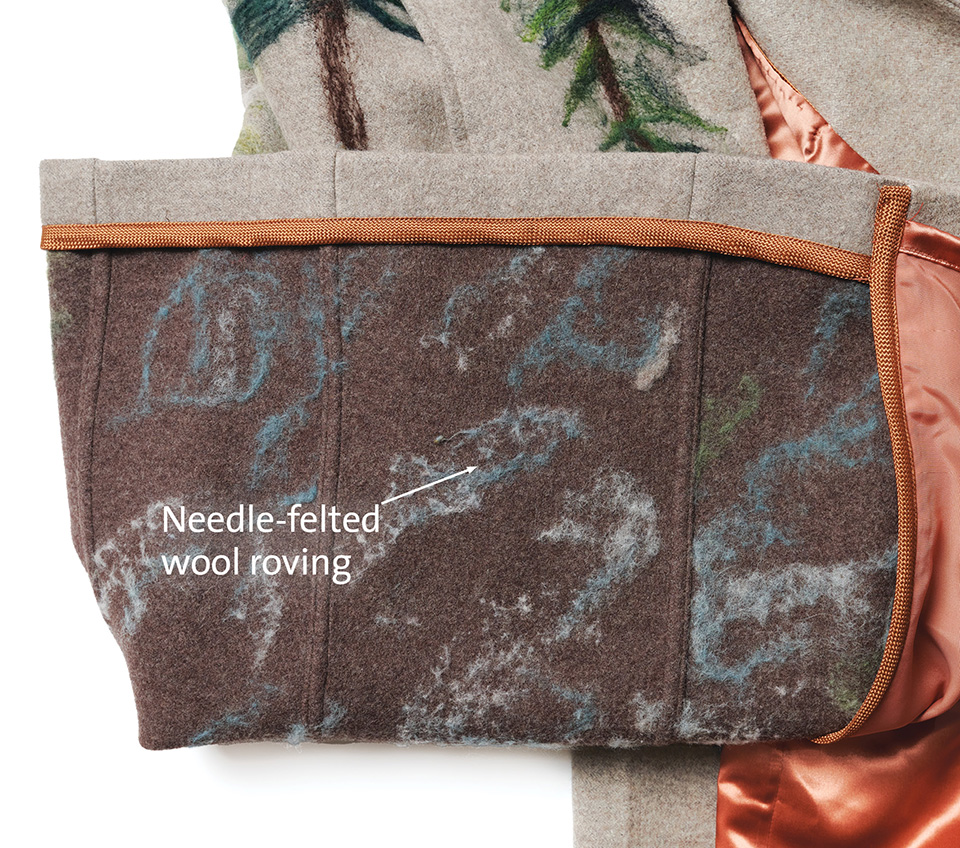
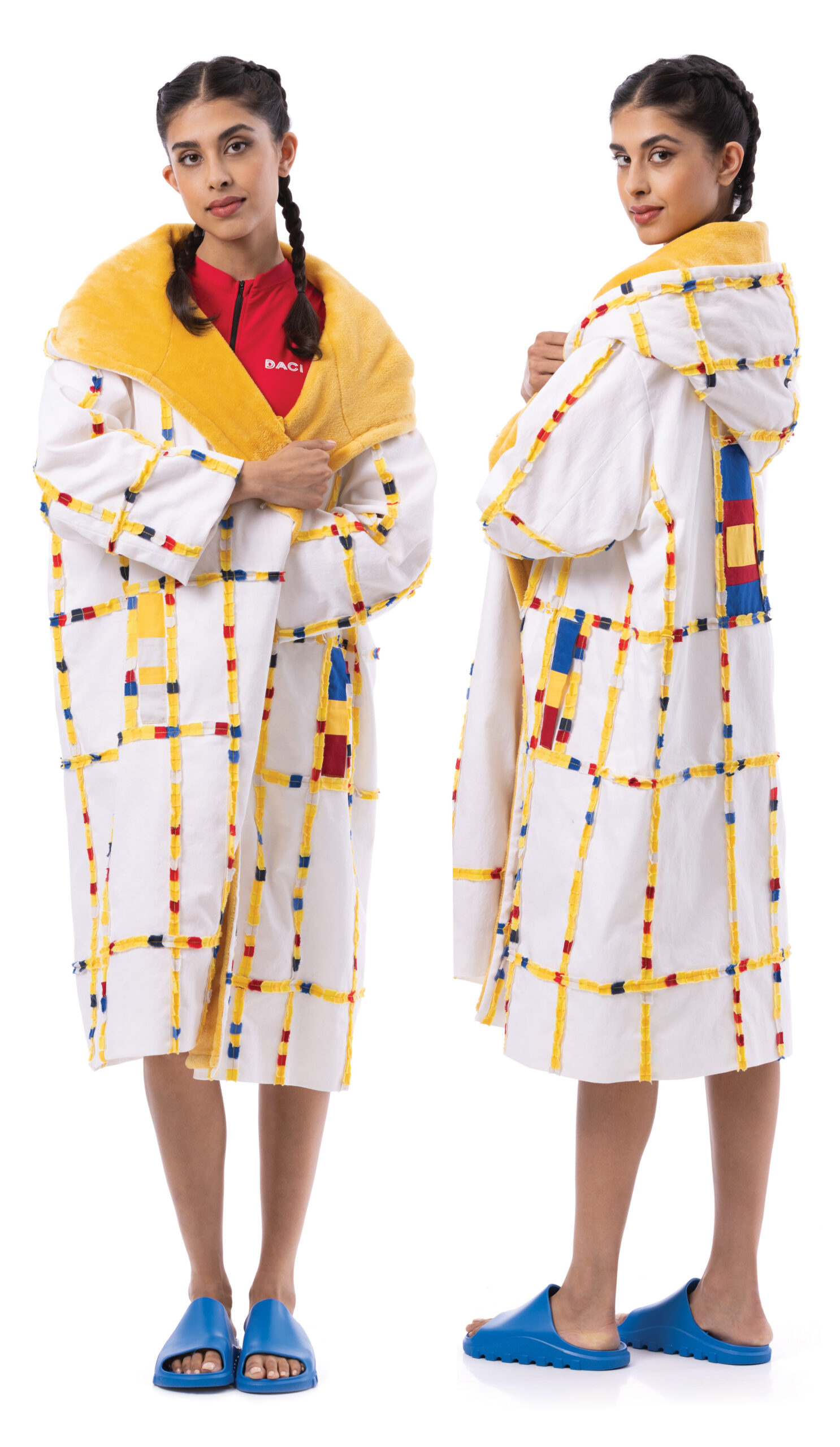
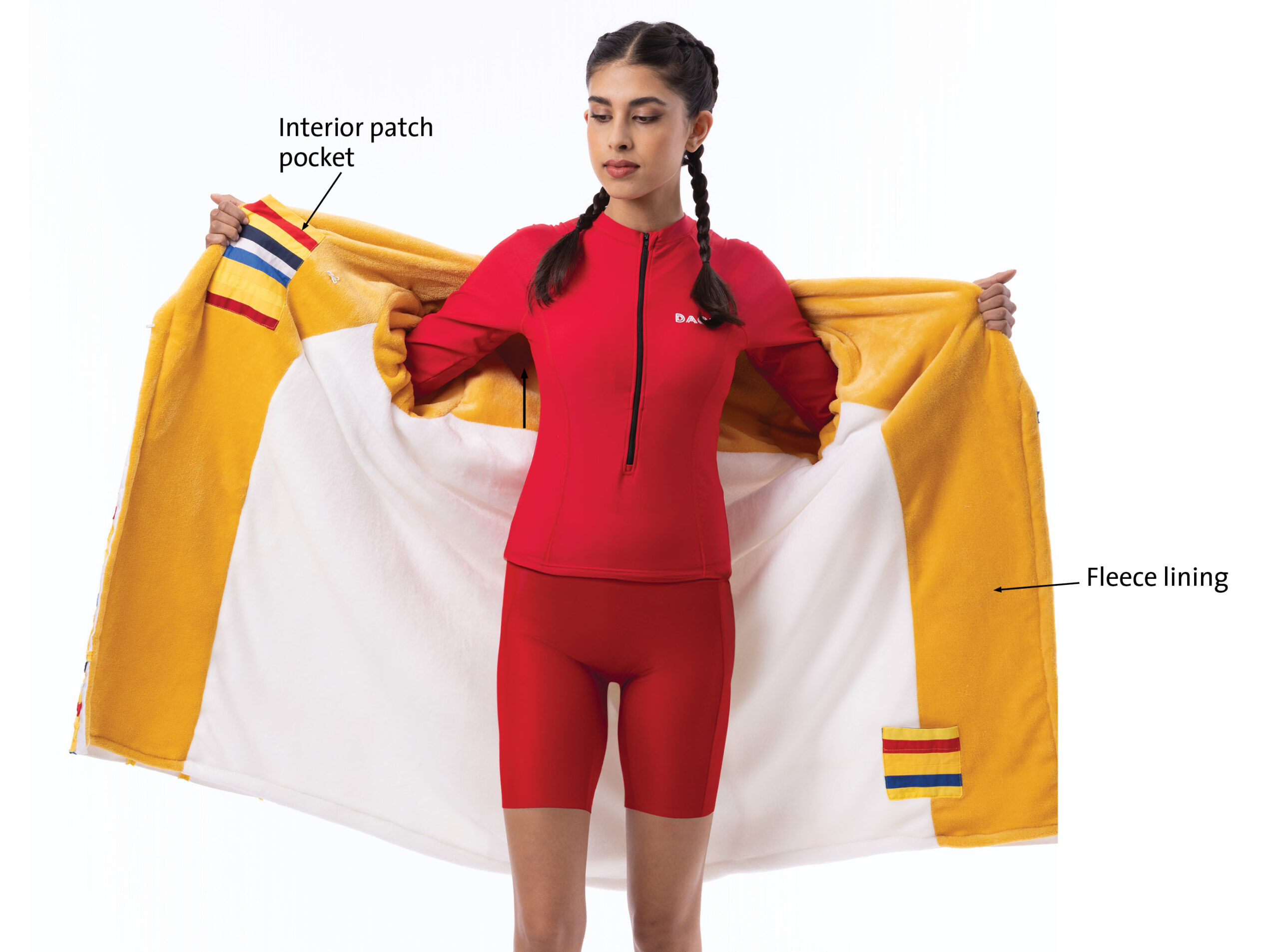
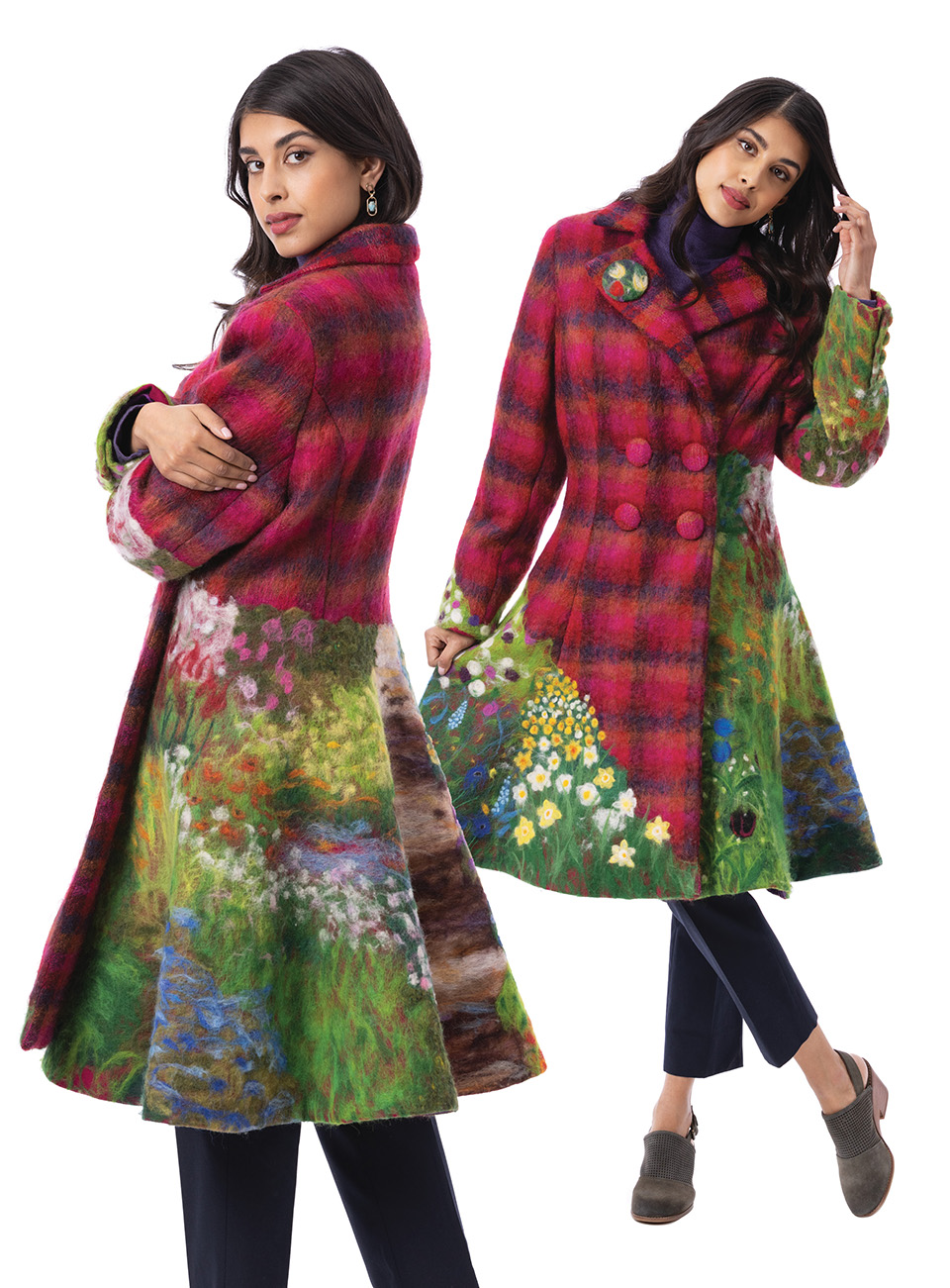
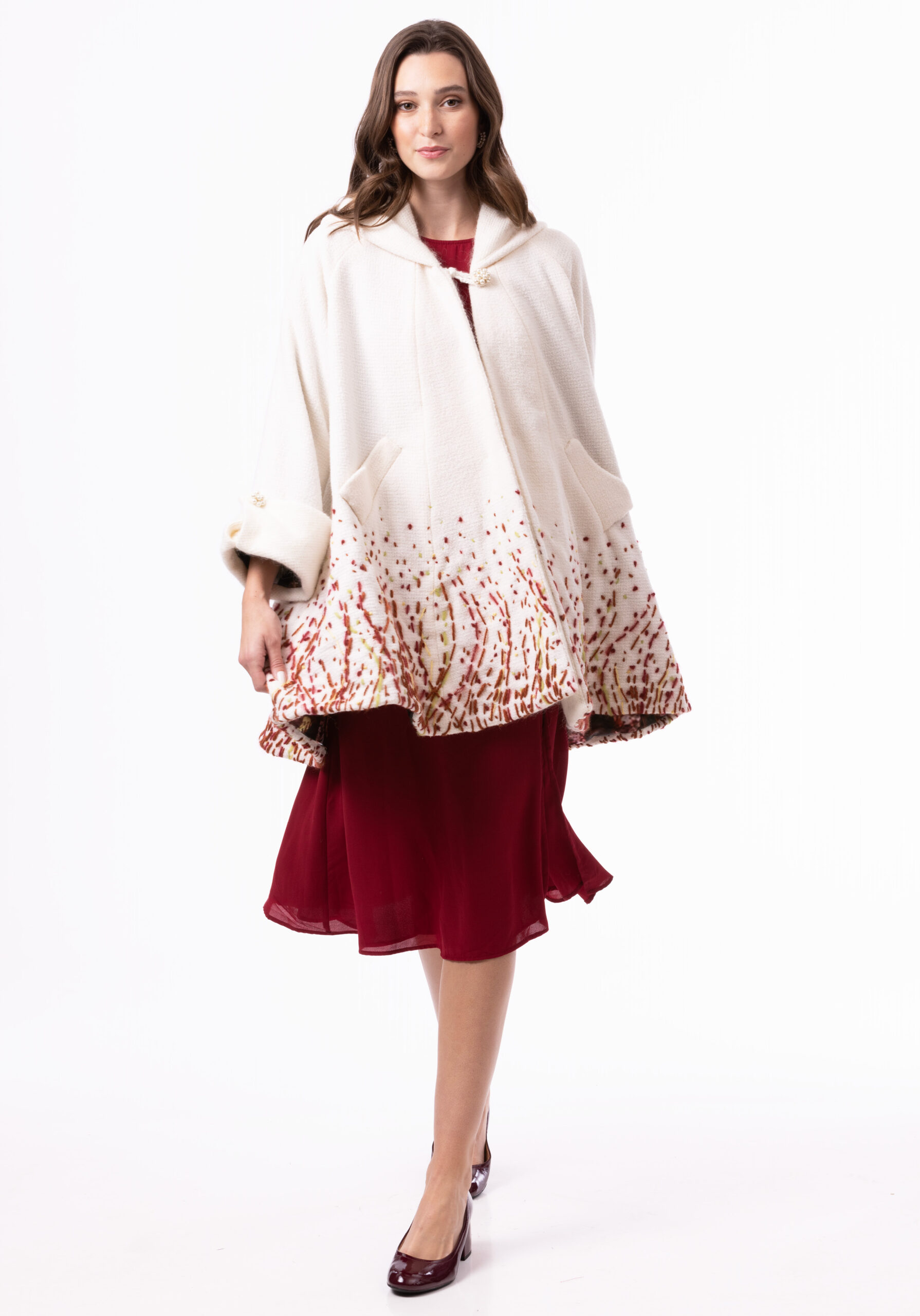
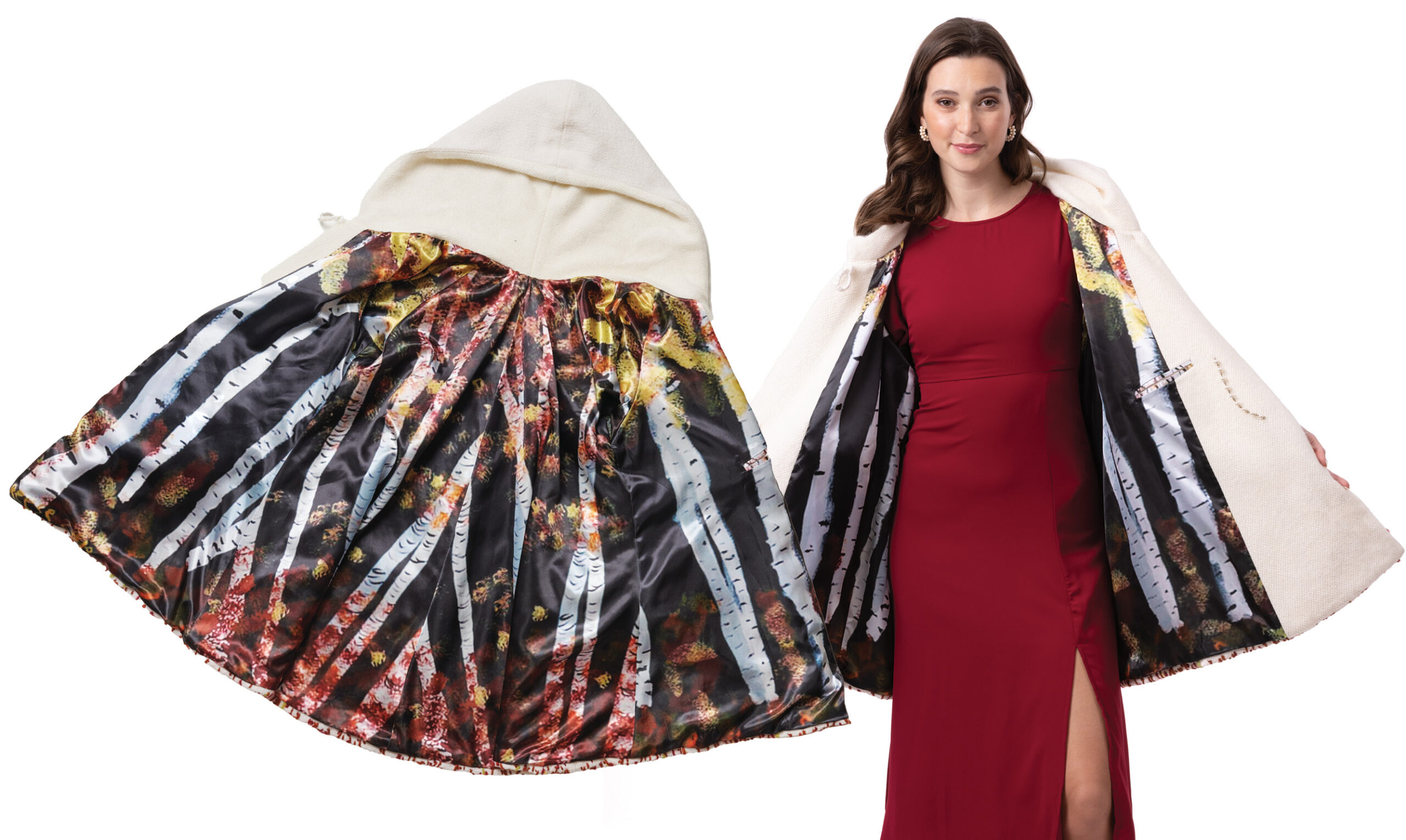
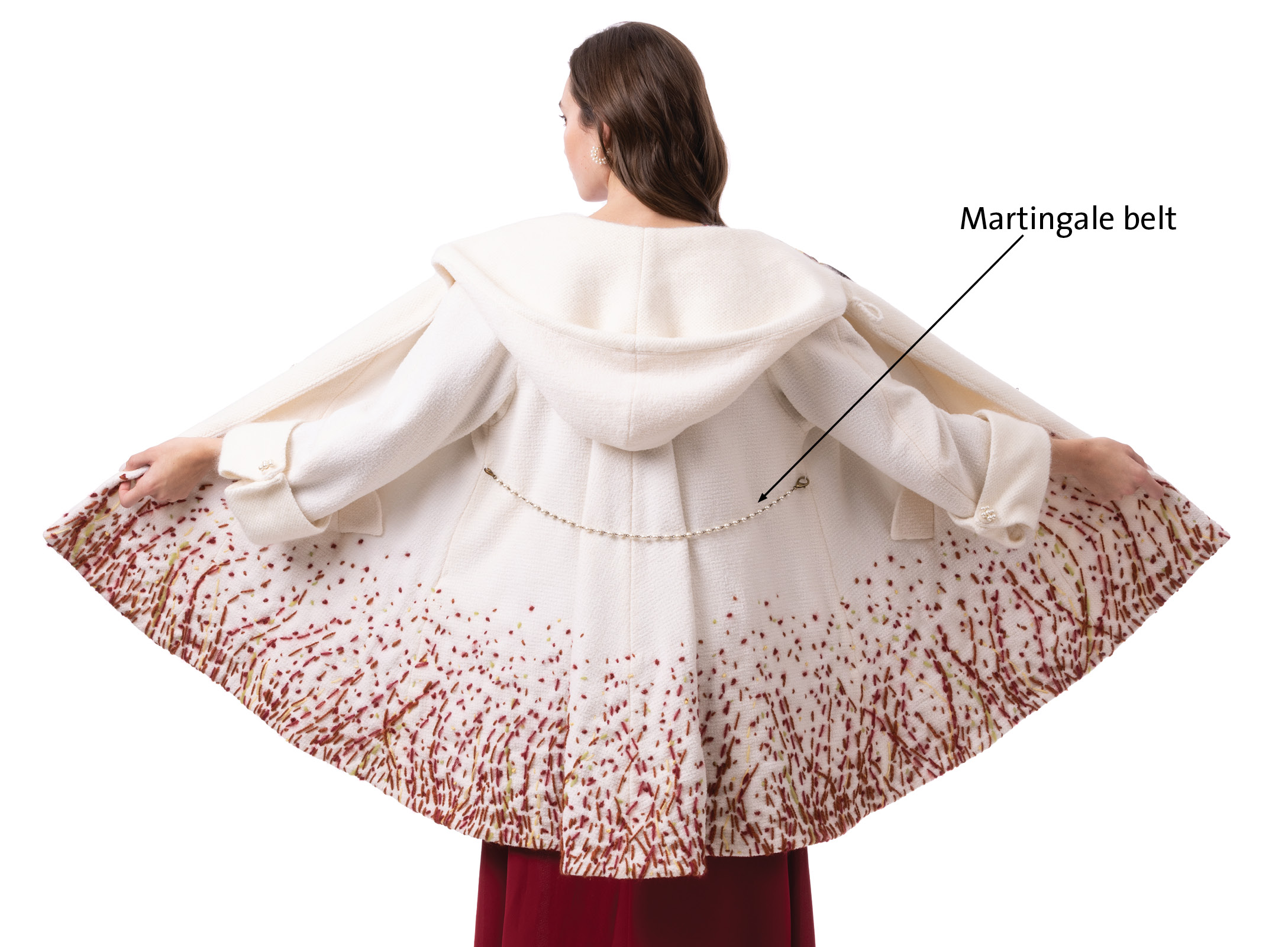
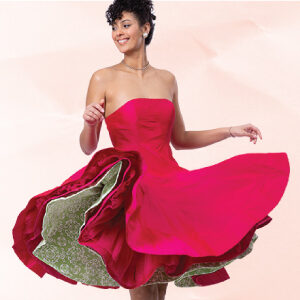


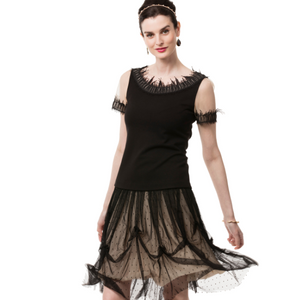








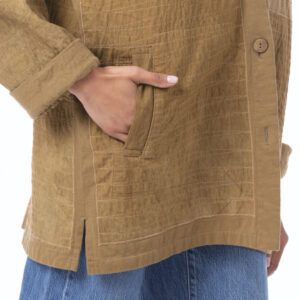
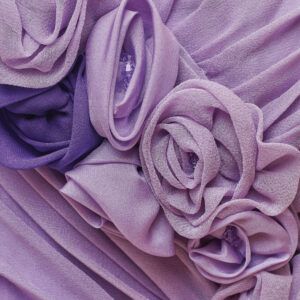

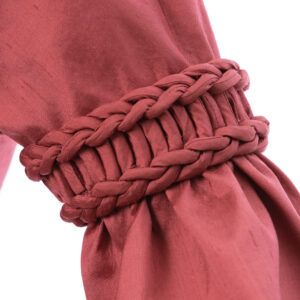

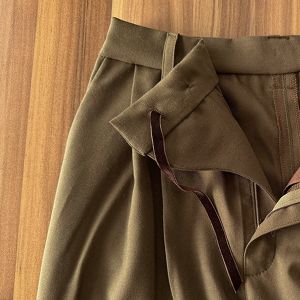















Log in or create an account to post a comment.
Sign up Log in